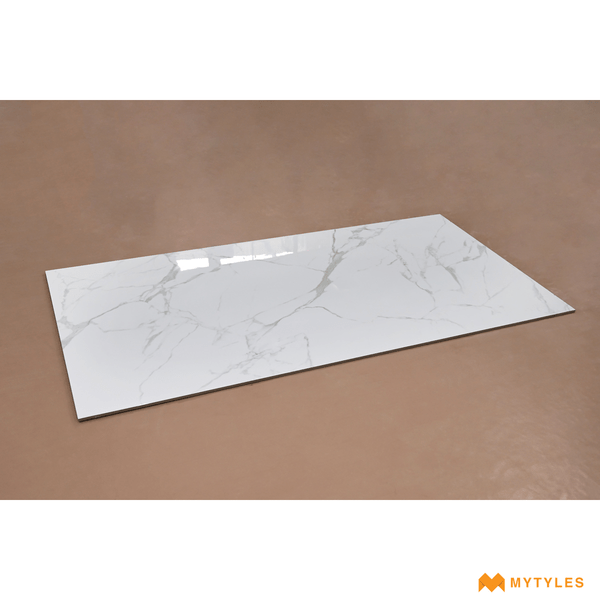Table of Contents
Introduction
Context: Begin by emphasizing the importance of choosing the Best Tiles for Kitchen Walls in Indian homes, considering the country’s diverse climates and cooking styles. Highlight how the right tiles can enhance both the functionality and aesthetic appeal of a kitchen, making it a central and cherished space in the home. Mention how Indian kitchens often face unique challenges, such as exposure to high humidity, heavy use of spices, and frequent cleaning, making the selection of durable and easy-to-maintain tiles essential.
Overview: Briefly mention that you’ll be covering the Best Tiles for Kitchen Walls from leading brands available in India. Emphasize that this guide will help readers find tiles that not only look beautiful but also withstand the rigors of daily cooking. Point out that the article will cover a variety of styles and materials, catering to different tastes and budgets, ensuring that every reader can find the perfect tile for their kitchen. Also, assure them that the brands featured are well-known and trusted in the Indian market, providing quality and value for money.
Understanding Kitchen Wall Tiles in India
Types of Tiles: Discuss common tile types available in India, such as ceramic, porcelain, and vitrified tiles.
Market Overview: Mention how the Indian market is growing, with an increasing focus on style and durability.
Considerations Before Buying: Highlight specific factors like resistance to heat, easy cleaning due to heavy Indian cooking, and regional availability.
rble can be used, they need to be properly sealed to prevent moisture absorption. When sealed correctly, they can withstand humid conditions and add a luxurious touch, making them some of the Best Tiles for Kitchen Walls in a high-end kitchen.
1. Ceramic Tiles
- Moisture Resistance: Ceramic tiles are a popular choice for high-humidity areas because they are highly resistant to moisture. The glazed surface of ceramic tiles prevents water absorption, making them one of the Best Tiles for Kitchen Walls in Indian kitchens where humidity levels can be high.
- Durability: These tiles are sturdy and can withstand heavy use, which is common in Indian kitchens.
- Maintenance: Ceramic tiles are easy to clean and maintain, which is essential in a kitchen environment. They resist stains and can be wiped down regularly without losing their shine.

2. Porcelain Tiles
- Waterproof: Porcelain tiles have a lower water absorption rate than ceramic tiles, making them even more suitable for high-humidity areas. They are almost impervious to water, which helps prevent issues like mold and mildew, making them one of the Best Tiles for Kitchen Walls in humid environments.
- Strength: Porcelain is known for its strength and durability, making it a great choice for kitchens that see a lot of activity.
- Design Versatility: These tiles come in a wide range of designs, including those that mimic natural stone, providing both functionality and aesthetic appeal.

3. Vitrified Tiles
- Low Water Absorption: Vitrified tiles are a type of ceramic tile known for their extremely low water absorption, making them perfect for humid environments like Indian kitchens. This makes them among the Best Tiles for Kitchen Walls where humidity is a concern.
- Durability: These tiles are highly durable and can handle the wear and tear of a busy kitchen.
- Ease of Cleaning: Vitrified tiles are non-porous and easy to clean, which is beneficial in a humid kitchen where spills and stains are common.

4. Glass Tiles
- Non-Porous Surface: Glass tiles are non-porous, meaning they do not absorb water, making them an excellent choice for areas with high humidity. They are also resistant to stains and mold, qualifying them as some of the Best Tiles for Kitchen Walls in terms of hygiene and maintenance.
- Aesthetic Appeal: Glass tiles can add a glossy, reflective finish to your kitchen walls, enhancing the light and making the space feel brighter and more spacious.
- Maintenance: While they are easy to clean, glass tiles can show fingerprints and water spots, so regular wiping is necessary to keep them looking pristine.

5. Natural Stone Tiles (with Sealing)
Maintenance: Sealing natural stone is crucial; otherwise, these tiles can absorb moisture and become prone to staining or damage. Regular resealing is required to maintain their moisture resistance.
Stone Options: While natural stone tiles like granite or marble can be used, they need to be properly sealed to prevent moisture absorption. When sealed correctly, they can withstand humid conditions and add a luxurious touch, making them some of the Best Tiles for Kitchen Walls in a high-end kitchen.

Additional Option:
- Vinyl Wall Tile Stickers: Apart from all this, vinyl wall tile stickers are also available, offering a very cheap and easy-to-install alternative for kitchen walls.
Top 10 Best Tiles for Kitchen Walls (with Indian Brands)
Product List: List the best tiles, featuring both global and top Indian brands. For each tile, include:
Tile Name and Brand: Examples include Kajaria, Somany, Johnson Tiles, Nitco, and Orientbell.
Image: Provide images with affiliate links to Indian e-commerce sites like Amazon, Flipkart, or tile-specific platforms like Buildpro or MyTyles.
Key Features: Highlight features such as resistance to stains, heat, and moisture.
Pros and Cons: Include specific feedback based on Indian customer reviews.
Price Range: Provide prices in INR and mention the availability in local stores or online.
Detailed Reviews
In-Depth Reviews: Choose 3-5 tiles from Indian brands and provide detailed reviews, including:
User Reviews & Ratings: Summarize feedback from Indian consumers.
Installation Tips: Provide tips relevant to Indian homes, such as how to handle humidity or temperature variations.
Best For: Recommend tiles based on different Indian kitchen styles (e.g., modern urban kitchens, traditional kitchens).
How to Choose the Best Tile for Your Kitchen in India
Aesthetic Considerations: Discuss popular colors, patterns, and designs trending in Indian kitchens.
Functional Considerations: Emphasize tiles that are easy to clean, durable, and resistant to the heavy spices and oils used in Indian cooking.
Budgeting Tips: Provide a range of budget options, highlighting cost-effective yet stylish choices available in India.
Top Indian Brands for Kitchen Wall Tiles
Brand Profiles: Provide a brief overview of top Indian tile brands like Kajaria, Somany, Johnson, Nitco, and Orientbell, focusing on their reputation, product range, and innovation.
Where to Buy: Mention popular Indian e-commerce sites and physical showrooms where these tiles can be purchased (include affiliate links where possible).
Where to Buy Kitchen Wall Tiles in India
Online Retailers: List reliable Indian e-commerce platforms like Amazon, Flipkart, and specialized sites like MyTyles or Buildpro.
Local Stores vs. Online Purchase: Discuss the pros and cons of buying from local Indian stores versus online platforms, considering delivery options and regional availability.
Conclusion
Recap: Choosing the Best Tiles for Kitchen Walls in Indian homes is crucial for ensuring both durability and style, especially in kitchens where humidity levels and daily wear and tear can be high. Ceramic, porcelain, vitrified, glass, and natural stone tiles each offer unique benefits, from moisture resistance and ease of maintenance to aesthetic appeal. Porcelain and vitrified tiles stand out for their superior water resistance and durability, making them top choices for humid environments, while glass tiles provide a sleek, modern look. Selecting the right tile not only enhances the functionality of your kitchen but also elevates its overall design.
Call to Action: Ready to upgrade your kitchen? Explore the recommended brands and find the Best Tiles for Kitchen Walls that suit your needs. Click on the affiliate links to browse and purchase tiles that will transform your kitchen into a stylish, durable, and easy-to-maintain space.
Invite Engagement: We’d love to hear from you! Share your experiences with kitchen wall tiles in Indian homes. Which tiles have worked best for you, and what advice would you give to others? Drop your thoughts in the comments below!
Affiliate Disclosure
Transparency: Include a clear affiliate disclosure, especially since you’re promoting specific Indian brands and retailers.
Which tiles are best for Indian kitchens with high humidity?
For Indian kitchens with high humidity, porcelain tiles are often considered the Best Tiles for Kitchen Walls due to their superior water resistance, durability, and ease of maintenance. Vitrified tiles are also an excellent choice for similar reasons. If you prefer a more decorative look, glass tiles can be a good alternative, especially for backsplash areas.
How to clean kitchen tiles effectively after cooking with spices?
Cleaning kitchen tiles effectively after cooking with spices, which often involve oils and strong colors, requires a methodical approach to remove stains, grease, and odors. Here’s a step-by-step guide:
1. Immediate Wipe-Down
Act Quickly: After cooking, especially with strong spices like turmeric, chili powder, or curry, it’s important to wipe down the tiles as soon as possible. Use a damp cloth or sponge to remove any splatters before they set in.
Use Warm Water: A cloth dampened with warm water can help in dissolving any oils or fresh stains, making them easier to remove.
2. Prepare a Cleaning Solution
Mild Detergent Solution: Mix a few drops of mild dish washing liquid or a pH-neutral cleaner with warm water. This solution is gentle on tiles but effective in cutting through grease and removing stains.
Vinegar Solution for Stubborn Stains: For more stubborn stains, especially from turmeric, create a solution of equal parts white vinegar and warm water. Vinegar is a natural cleaner that helps in breaking down grease and removing tough stains without damaging the tiles.
3. Apply and Scrub
Apply Cleaning Solution: Apply your cleaning solution to the tiles using a soft cloth, sponge, or spray bottle. Ensure that the entire stained area is covered.
Scrub Gently: Use a soft-bristled brush or non-abrasive sponge to gently scrub the tiles. Focus on areas with grease or spice stains. Avoid using steel wool or abrasive pads, as they can scratch the tile surface, especially if you have glossy or glass tiles.
4. Rinse Thoroughly
Rinse with Clean Water: After scrubbing, rinse the tiles with clean, warm water to remove any soap residue or remaining cleaning solution. Soap residue can attract dirt and grime, making your tiles look dull over time.
Dry the Tiles: Use a dry, clean cloth to wipe down the tiles, ensuring no water spots or streaks are left behind. This is especially important for glass or glossy tiles that show streaks easily.
5. Tackle Stubborn Stains
Baking Soda Paste: For any remaining stubborn stains, especially those from turmeric or oil, make a paste using baking soda and water. Apply the paste to the stained area and let it sit for about 10-15 minutes before scrubbing gently with a soft brush.
Lemon Juice for Discoloration: Lemon juice can help in removing stains and brightening the tiles. Apply lemon juice to the stained area, let it sit for a few minutes, and then scrub gently.
6. Final Rinse and Dry
Final Clean: After treating stubborn stains, rinse the tiles again with clean water to remove any baking soda or lemon juice residue.
Dry Completely: Ensure the tiles are completely dry to prevent water spots and keep the tiles looking shiny and new.
7. Preventive Measures
Regular Cleaning: Make it a habit to wipe down your kitchen tiles daily or after each cooking session to prevent the build-up of grease and stains.
Seal Grout Lines: Grout lines between tiles can absorb stains easily. Consider sealing the grout to make it resistant to moisture and stains. Regularly clean grout with a toothbrush and a baking soda or vinegar solution to keep it looking fresh.
Use Backsplash Protection: Consider installing a removable backsplash protector behind your stove. This can catch most of the splatters and make cleaning easier.
By following these steps, you can keep your kitchen tiles clean, shiny, and free from the stubborn stains and grease that often accompany Indian cooking. Regular maintenance is key to preserving the appearance and longevity of your tiles.
Exist any possibilities for Eco-friendly tiles in India?
Eco-friendly tiles are not only available but also increasingly popular in India as more homeowners and builders seek sustainable options. When choosing Eco-friendly tiles, it’s essential to consider both the materials used and the manufacturing practices of the brand. Recycled glass, terrazzo, sustainably produced ceramic and porcelain, natural stone, cement, and clay tiles all offer excellent options for creating an environmentally responsible kitchen space in your home.

